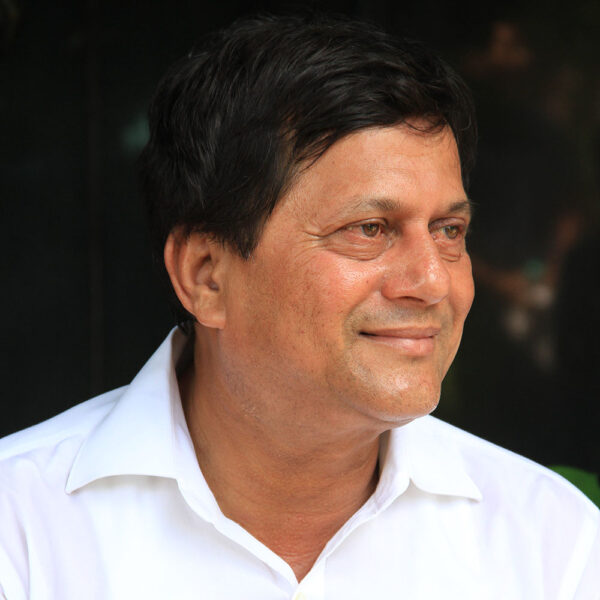Knowledge Repository
Public transport in Germany
Snehagni Roy
“A developed country is not a place where the poor have cars. It’s where the rich use public transportation.” -Mayor of Bogota
Public transport in Germany is outstanding, covering effectively regions inside the big cities, interconnecting cities as well as connecting smaller towns along the way. Its excellent reputation refers to it being reliable, comfortable and relatively fast. Albeit the fact that Germans are known to be car lovers, most citizens living inside big cities, especially expats choose to use public transport in their everyday lives. Bigger cities offer various types of public transportation compared to smaller towns yet even in the smallest towns there is at least a bus system.
The following presentation will take you through various modes of transportation you can avail in Germany.
Dresden Music Festival
Shristy Viswakarma
The Dresden Music Festival is one of the largest and most highly acclaimed classical music festivals in Europe, presenting a high-level program of extraordinary density and variety every May and June. the festival program's focus lies more than ever on genre diversity and internationality. World-renowned orchestras like the Vienna Philharmonic under Daniel Harding, the Royal Concertgebouw Orchestra under Fabio Luisi, or the London Symphony Orchestra under Sir Simon Rattle meet the protagonists of the singer/songwriter, jazz, rock, and world music scenes.The baroque old town of Dresden is filled with historical gems on every corner. most of the events of the Dresden Music Festival will take place open air, in the picturesque Stallhof of Dresden Castle. Other venues are the Kulturpalast and the Frauenkirche. Dresden is a very beautiful city, a real summer city with great cultural traditions, famous museums and exhibitions and beautiful architecture – during the Dresden Music Festival there is music everywhere in the city.
German Architectural History & Accommodations
Aishee Ghosh
The architecture of Germany has a long and diverse history. Germany is home to a fascinating array of architectural styles, with city landmark structures, ‘Disney’ castles, and rural historic homes. In the major urban areas, you can expect cathedrals, churches, concert halls, and even libraries, design of which will make you gaze upward. So, let’s dive deep into a comprehensive story of German architecture history. Furthermore, find out what are the types of accommodations and are those sturdy enough to width-stand storms? Look no further, I have got you covered in this informative slide.
Drinking Culture in Germany
Rajarshi Pal
Oktoberfest and the famous German love of beer springs to mind whenever one thinks about German Culture and this isn’t just a stereotype. Germany is renowned for its drinking culture being the fifth heaviest alcohol-consuming nations in Europe placed after Luxembourg, Hungary, Czech Republic and Ireland. It’s one of few countries in the world where consuming alcohol in public is legal with the legal drinking age being just sixteen. While the conventional thought make Germans continually swigging beer, many prefer wines and other non-alcoholic beverages too. This slideshow will walk you through the vibrant history, culture and the heritage of Germany’s drinking culture.
History and Origin of German Language
Utsa Saha
The origin of German language dates back to 1st century B.C. It belongs to one of the West Germanic groups of the Indo-European language, which is also combined with English, Frisian and Dutch.The language has two different dialect groups : the High German and the Low German. The history of the German language started when the Germanic tribes came in contact with Roman records from Julius Caesar and Roman historians. The history from this period is divided
into four periods (A.D.)-
- Old High German
- Middle High German
- Early New High German
- New High German
The periods are mainly based on the gradual developments in education and spread of the German language from the clergy and nobility to the common people. These gradual developments are ones which bring German language to be the second most common scientific language in the world.
Traditional dress of Germany
Agnijita Roy
Every region in the world is easily identifiable by the kind of clothing that was traditionally worn there. From the ‘kimonos’ worn in Japan to the ‘sarees’ draped in India, from Scotland’s ‘kilts’ to Mexico’s ‘pueblas,’ these garments were, and still are, linked with the country’s culture. The traditional clothing worn in Germany is no exception. The clothes that men and women wore traditionally tell us a lot about the country and its culture.If you’ve been to Oktoberfest, which is celebrated all over the world, you are familiar with lederhosen and dirndls.
This presentation takes you through a detailed tour of Traditional attire or “tracht” of Germany and its significance.
German Literature
Neelotpala Dash
Literature is a method of recording, preserving and transmitting knowledge and entertainment, which could have a social, psychological, spiritual or political role in society. German literature comprises the written works of the german-speaking people in regions including Germany, Austria, Belgium, Switzerland and some work of the German diaspora. Its history and development have suffered the same fate as the growth of Germany as a modern nation.
German literature has experienced three periods of establishment: the high middle ages, the turn of 18thto 19th century (the Age of Gothe) and the turn of the 19th to 20th century. Few great writers include Herzog Ernst, Andreas Gry Phius, Johann wolfgang von Gothe, Christa Wolf and Gunter Grass.

